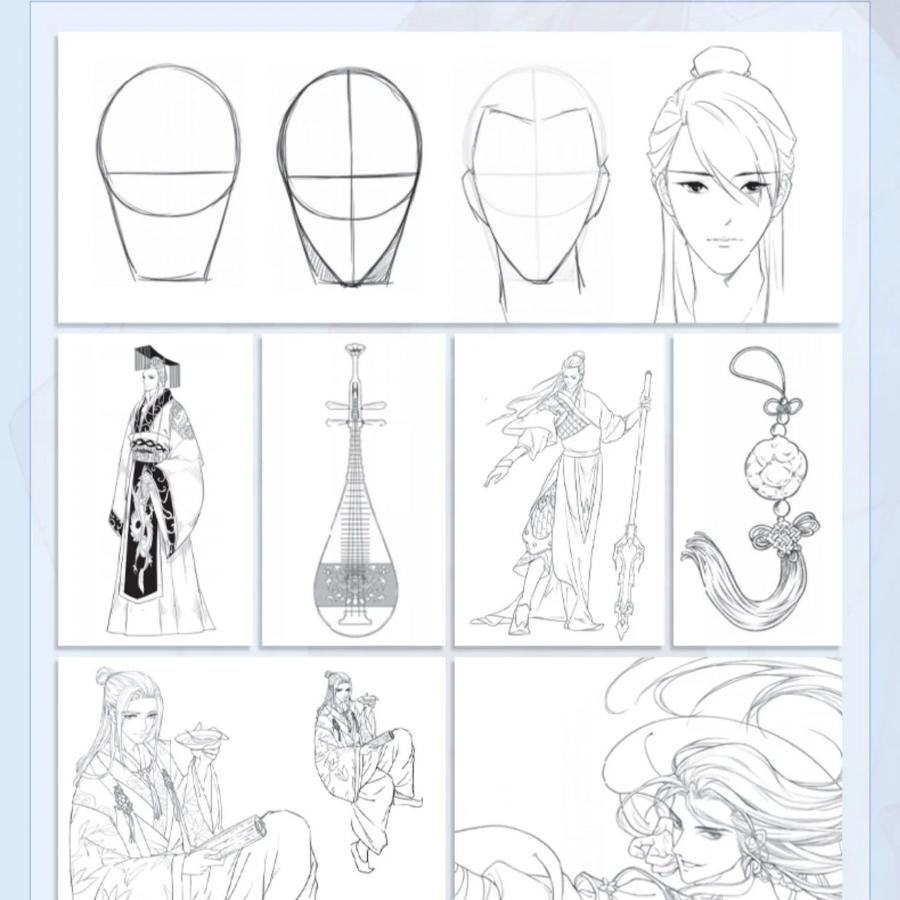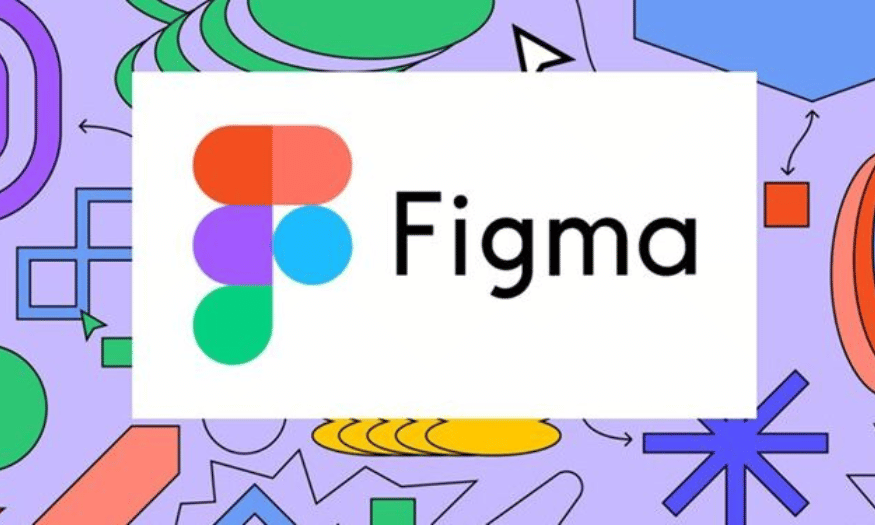Best Selling Products
Sharing Tips To Help You Improve Your Line Art Drawing Skills
Nội dung
- 1. Outstanding features of Line Art
- 1.1. Minimalism in expression
- 1.2. Line thickness
- 1.3. Flexibility in application
- 1.4. In line with modern trends
- 1.5. Easy to customize
- 2. Application of Line Art in design
- 2.1. Logo design
- 2.2. Illustrations and graphics
- 2.3. User Interface (UI) Design
- 3. Tips to improve Line Art drawing skills
- 3.1. Practice with basic shapes
- 3.2. Observation and analysis
- 3.3. Use of support software
- 4. Conclusion
Discover Line Art – a minimalist yet attractive style. Learn about its features, applications and how to improve your Line Art drawing skills effectively.

Line art, also known as Line Art, is a visual art style that uses straight or curved lines to create shapes without the use of color or complex shading. Line Art is characterized by minimalism, sophistication, but still full of expressive power. This style is not only applied in painting but also popular in graphic design, illustration, and even product design. In the following article, Sadesign will share tips to help you improve your Line Art drawing skills, follow along now!
1. Outstanding features of Line Art
In the world of modern graphic design, Line Art has emerged as a unique style, combining minimalism and artistic depth. With the use of simple lines, Line Art not only creates impressive images but also conveys a strong message. This article will help you better understand the outstanding features of Line Art, especially the minimalism in expression and the influence of line thickness on the work.
(1).jpg)
1.1. Minimalism in expression
Line Art eliminates complex elements such as color or shading, focusing on using lines to describe shapes and spaces. This makes the work easier to understand and more accessible to viewers.
What is Minimalism?
Minimalism is a design trend that focuses on removing unnecessary elements, keeping only the most essential. In Line Art, this is expressed through the use of simple lines, without shading or complex colors. Each line has a clear purpose, creating a harmonious and accessible whole.
Line Art – Symbol of Sophistication
Line Art is not just drawing simple lines; it is the art of creating shapes from basic lines, expressing creativity and sophistication. Each Line Art work has its own message, conveyed through the skillful combination of lines. This helps viewers easily recognize and feel the deep meaning of the work.
1.2. Line thickness
Varying the thickness of a line helps create depth and emphasize important parts of a piece. Thick lines are often used to highlight major details, while thin lines represent minor details.
Creating Depth and Emphasis
One of the important elements in Line Art is the use of thin and thick lines to create depth and emphasize important details. Thick lines are often used to highlight the main parts of the work, while thin lines help create lightness and sophistication for the secondary details. This combination makes the work not only beautiful but also deep, attracting the viewer.
Applications In Graphic Design
In graphic design, the use of line thickness not only helps create aesthetic beauty but also helps in conveying the message. For example, in logo design, the use of appropriate line thickness can highlight the brand's characteristics, making the logo easy to recognize and remember. Similarly, in illustration design, adjusting the line thickness helps create balance and harmony for the work.
1.3. Flexibility in application
Line Art is not only an art style, but also a powerful tool in design. With diverse application capabilities, Line Art can appear in many different fields, from interior decoration, product design, to advertising and communication.
(1).jpg)
Applications in interior decoration
In interior decoration, Line Art brings a sophisticated and modern beauty. Simple but impressive Line Art paintings can highlight the living space, creating a comfortable and luxurious feeling.
Use in product design
Line Art is also widely used in product design, from packaging, labels to fashion products such as T-shirts and handbags. These designs are not only attractive but also show the brand's unique style.
Advertising and communication
In the field of advertising and communication, Line Art helps to convey messages clearly and impressively. Simple but powerful Line Art images can attract customers' attention, helping to increase the effectiveness of communication campaigns.
1.4. In line with modern trends
Line Art is not only an art style, but also reflects modern design trends. With the development of technology and changes in consumer preferences, Line Art has become a popular choice in many design fields.
Simplicity and elegance
In the modern design world, simplicity and sophistication are always favored. Line Art, with its simple yet meaningful strokes, fits this trend. It helps create designs that are uncluttered yet impressive.
High applicability
Line Art is not only beautiful but also easy to apply in many fields. From interior decoration, product design to advertising and communication, Line Art can bring impressive designs that are suitable for modern trends.
Reflects modern lifestyle
Line Art also reflects the modern lifestyle where people seek simplicity, sophistication and efficiency. Line Art designs are not only beautiful but also express the lifestyle of the user.
1.5. Easy to customize
One of the great advantages of Line Art is its high level of customization. With simple strokes, Line Art can be easily adjusted to suit personal needs and preferences.
Customize to your personal style
Line Art allows users to customize to their personal style. You can change colors, shapes, and sizes to create designs that suit your own preferences and style.
Compatible with multiple platforms
Line Art can be used across a variety of platforms, from print to digital. This makes Line Art an ideal choice for a wide range of applications, from interior decoration, product design to advertising and communications.
Easy to combine with other styles
Line Art is also easy to combine with other design styles, from classic to modern. You can combine Line Art with other elements to create unique and impressive designs.
2. Application of Line Art in design
(1).jpg)
2.1. Logo design
Line art is a simple yet powerful design style that uses straight and curved lines to create striking images. In this article, we will explore three main applications of line art in design: logo design, illustration and graphics, and user interface (UI) design. Each application demonstrates the power of line art to convey a message clearly and effectively.
Simplicity makes a powerful impression
In logo design, line art helps create simple yet recognizable images. The use of basic lines not only makes the logo memorable but also clearly represents the brand identity. For example, the Roam logo uses line art to create a simple yet meaningful image that helps viewers easily recognize the brand.
Flexibility and adaptability
Line art logos are often highly flexible, easily adapting to many different platforms and sizes. This is especially important in the digital age, when logos need to appear on many different media such as websites, mobile applications, or printed publications.
High aesthetics
Line art brings a delicate and modern beauty to the logo. The use of thin and simple lines helps the logo not to be confusing, creating a sense of elegance and comfort for the viewer.
2.2. Illustrations and graphics
Create impressive and easy to understand images
In illustrations and graphics, line art helps create clear and easy-to-understand images. The use of simple lines makes it easy for viewers to absorb information without being distracted.
Flexibility in application
Line art can be applied in many different fields such as books, magazines, advertisements, or media publications. This helps create unity in design style, while enhancing the effectiveness of message transmission.
Cost and time savings
Compared to complex design styles, line art saves costs and production time. The use of fewer colors and details reduces effort and costs in the design and production process.
2.3. User Interface (UI) Design
Create a clean and easy to use interface
In UI design, line art helps create a clean and easy-to-use user interface. The use of simple icons and lines makes it easy for users to recognize and interact with the app's functions.
Multi-device compatibility
Line art helps create icons and user interfaces that can easily adapt to a variety of devices and screen sizes. This ensures that users can experience the app smoothly and conveniently on any device.
Enhance user experience
Using line art in UI design not only makes the interface look beautiful but also enhances the user experience. Simple icons and lines make it easy for users to understand and use the application's functions, thereby increasing user satisfaction and loyalty.
3. Tips to improve Line Art drawing skills
Drawing Line Art is an art technique that requires meticulousness and patience. To improve your skills in this field, practicing with basic shapes, observing and analyzing works of art, along with using supporting software are important steps.
(1).jpg)
3.1. Practice with basic shapes
Starting with basic shapes like circles, squares, triangles and rectangles is the first step in developing your Line Art skills. This will help you get familiar with basic lines and how they combine to form shapes.
Drawing basic shapes
Start by drawing basic shapes on paper or on your computer screen. Take your time and redraw them until you feel confident with your lines. This will help improve your accuracy and consistency.
Combine basic shapes
Once you have mastered the basic shapes, try combining them to create more complex shapes. For example, you can combine circles and rectangles to create a human or animal shape. This will help you better understand the structure and proportions in Line Art.
3.2. Observation and analysis
Observing and analyzing other artists' Line Art works is an effective way to learn and improve your skills.
Line Art Analysis
Take some time to look at famous line art. Pay attention to how artists use lines, proportions, and shading to create depth and emotion in their work. This will help you recognize different techniques and styles of line art.
Learn from artists
Don’t be afraid to learn from artists you admire. You can take online courses, read books, or watch video tutorials to learn Line Art techniques and tips. This will help you expand your knowledge and improve your skills.
3.3. Use of support software
In this age of technology, using supporting software is an effective way to improve your Line Art drawing skills. Software such as Adobe Illustrator, CorelDRAW or Clip Studio Paint provide many tools and features to help you create professional Line Art works.
Get familiar with the software
Before you begin, take some time to familiarize yourself with the software’s interface and tools. You can take online courses or watch video tutorials to learn how to use the software effectively.
Practice regularly
Before moving on to more complex works, start with simple exercises like drawing basic geometric shapes, curves, or repeating patterns. These exercises will help you gain control over your lines and improve your hand flexibility.
Applying hatching and cross-hatching techniques
Hatching and cross-hatching are two important techniques in Line Art. They help create shadows and depth in your drawing. Practice by drawing simple shapes like squares and cylinders and apply these techniques to create light and shadow effects.
Drawing from reality
One of the most effective ways to improve your drawing skills is to draw from real life. Observe and draw objects around you, from simple objects to complex scenes. This will help you practice your observation skills and accurately reflect images in your paintings.
Join the community
Join Line Art drawing communities on social networks, forums, or online groups to connect with people who share the same interests. You can learn, share experiences, and receive feedback from the community.
Participate in drawing events
Many communities host online or offline drawing events, like Urban Sketchers, where you can join others in drawing. This is a great opportunity to practice your skills and expand your artistic network.
Share your work
Don’t be afraid to share your work on platforms like Instagram, DeviantArt, or Behance. Not only will this help you get valuable feedback, it will also motivate you to keep creating.
Learn from those who have gone before
Follow famous Line Art artists and learn from their styles and techniques. Many artists share their creative processes and drawing tips on online platforms, giving you access to valuable knowledge.
4. Conclusion
Line Art is a unique art style that combines minimalism and powerful expression. Mastering the techniques and applications of Line Art will not only help you create impressive works but also open up many opportunities in the field of design and art. Start practicing and exploring the software at Sadesign today to improve your skills and express your personal style.












































